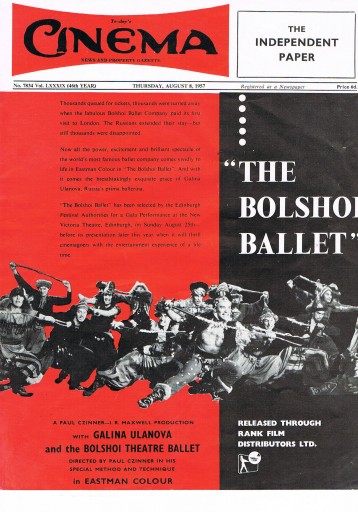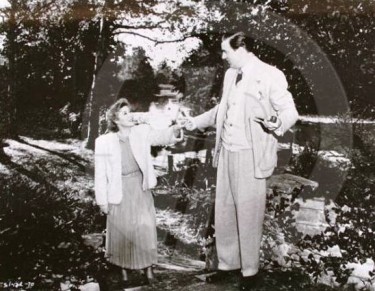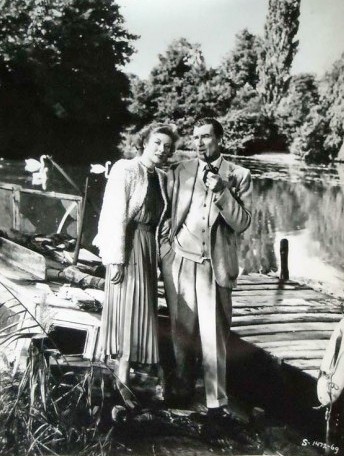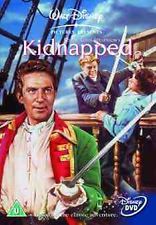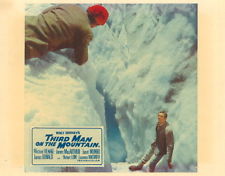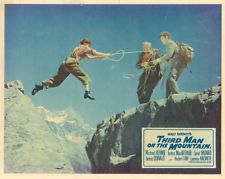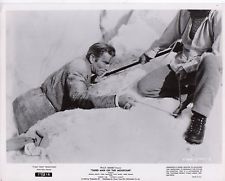A new version of this was done by the BBC in England a few months agp
it was actually very well done and well cast. This version though with Alistair Sim holds up very well indeed. A classic play.
Very much a one-off in character actor terms would be Alistair Sim who had in 1951 starred as Scrooge in A Christmas Carol – the very best version of this Dickens tale. Later also in the Fifties he would appear in The Green Man a sort of comedy drama and in this he used his wonderfully expressive face to great effect. I love that film and will come back to it later no doubt.
However on to An Inspector Calls – a very well known and frequently performed play by J.B. Priestley another of my personal favourites. A great British playwright and in a different mould to Terence Rattigan but nevertheless he was a provider of thought provoking drama.

The basic stoyline is as follows:-
At dinner at the Birlings’ home in 1912, Arthur Birling, a wealthy mill owner and local politician, and his family are celebrating the engagement of daughter Sheila to Gerald Croft, son of a competitor of Birling’s. Also there is Sibyl Birling, Arthur’s wife and Sheila and Eric’s mother, and Eric Birling, Sheila’s younger brother, who has a drinking problem that is discreetly ignored. After dinner, Arthur speaks about the importance of self-reliance. A man, he says, must “make his own way” and protect his own interests.
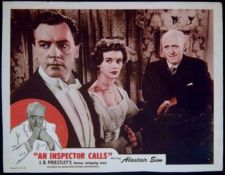
An Inspector Goole (Alistair Sim) arrives quite out of the blue and explains that a woman called Eva Smith has killed herself by drinking disinfectant. He implies that she has left a diary naming names, including members of the Birling family. Goole produces a photograph of Eva and shows it to Arthur, who acknowledges that she worked in one of his mills. He admits that he dismissed her 18 months ago for her involvement in a workers’ strike. He denies responsibility for her death.
Sheila enters the room and is drawn into the discussion. After prompting from Goole, she admits to recognizing Eva as well. She confesses that Eva served her in a department store and Sheila contrived to have her fired for an imagined slight. She admits that Eva’s behaviour had been blameless and that the firing was motivated solely by Sheila’s jealousy and spite towards a pretty working-class woman.
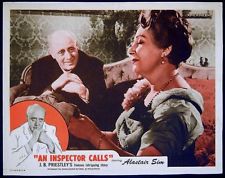
Sybil enters the room and Inspector Goole continues his interrogation, revealing that Eva was also known as Daisy Renton. Gerald starts at the mention of the name and Sheila becomes suspicious. Gerald admits that he met a woman by that name in a theatre bar. He gave her money and arranged to see her again. Goole reveals that Gerald had installed Eva as his mistress, and gave her money and promises of continued support before ending the relationship. Arthur and Sybil are horrified. As an ashamed Gerald exits the room, Sheila acknowledges his nature and credits him for speaking truthfully but also signals that their engagement is over.
Inspector Goole identifies Sybil as the head of a women’s charity to which Eva/Daisy had turned for help. Despite Sybil’s haughty responses, she eventually admits that Eva, pregnant and destitute, had asked the committee for financial aid. Sybil convinces the committee that the girl is a liar and the application should be denied. Despite vigorous cross-examination from Goole, Sybil denies any wrongdoing. Sheila begs her mother not to continue, but Goole plays his final card, making Sybil admit that the “drunken young man” should give a ‘public confession, accepting all the blame’. Eric enters the room, and after brief questioning from Goole, he breaks down, admitting that he drunkenly forced Eva to have sex and stole £50 from his father’s business to pay her off when she became pregnant. Arthur and Sybil break down, and the family dissolves into screaming recriminations.
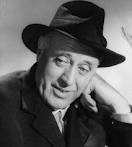
Goole accuses them of contributing to Eva’s death. He reminds the Birlings (and the audience) that actions have consequences. “If men will not learn that lesson, then they will be taught it in fire and blood and anguish.”
Gerald returns, telling the family that there may be no ‘Inspector Goole’ on the police force. Arthur makes a call to the Chief Constable, who confirms this. Gerald points out that as Goole was lying about being a policeman, there may be no dead girl. Placing a second call to the local infirmary, Gerald determines that no recent cases of suicide have been reported. The elder Birlings and Gerald celebrate, with Arthur dismissing the evening’s events as “moonshine” and “bluffing”.
The film ends with a telephone call, taken by Arthur, who reports that the body of a young woman has been found, a suspected case of suicide by disinfectant, and that the local police are on their way to question the Birlings. The true identity of Inspector Goole is never explained, but it is clear that the family’s confessions over the course of the evening are true, and that they will be disgraced publicly when news of their involvement in Eva’s demise is revealed.
It is a classic case of ‘unzipping a banana’ in that we all are watching a gradual revelation of cruel and heartless behaviour from so called pillars of society and they themselves are pushed into eventual acceptance of their shame as Alistair Sim’s character The Inspector looks on knowingly as each one is forced to reveal their part in the tragedy. Although we suspect what the future holds that is left in the air.
This is a similar plot line to a 1935 Film ‘ The Passing of the Third Floor Back’ with Conrad Veidt as The Stranger who enters a house of converted flats or rooms and again gradually opens the door on similar goings on. I wonder how many of the readers here know of this film. I do have a DVD copy if anyone would like one – it is a good film. In this one the unfortunate girl is played by Rene Ray who looks very like Jane Wenham who played Eva Smith in An Inspector Calls. Again in ‘The Passing of the Third Floor Back’ film Conrad Veidt’s character was mysterious but exhuding great power as if a divine prescence.
I have taken from the Movie Data Base an extract from a comment made about this film:-
René Ray is wonderful as Stasia, servant girl at a London boarding house occupied by a nasty landlady and a wicked bunch of boarders. Stasia was hired on the cheap from a reformatory and receives nothing but scorn and cruelty from the boarders. She longs for escape, or at least a bit of kindness: “If only there was one decent person….” Pushed to her limit, Stasia heads for the door, where—
Conrad Veidt walks in and immediately the girl senses something different in him. It’s a beautiful, surprising scene: She is suddenly smiling.
Veidt is a very polite, extremely soft-spoken and apparently nameless stranger. He leases a tiny third floor apartment in the house and quickly and quietly changes the atmosphere, the relationships, the attitudes of the other boarders.
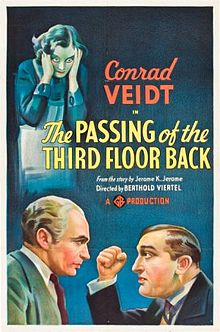
Among the group, Beatrix Lehmann stands out as Miss Kite, a not-so-old spinster who is bitter that time is passing her by—and in whom the spark of energy and love of life is perhaps re-lit. Anna Lee gives a strong performance as the beautiful young woman who is her impoverished parents’ only valuable possession. Must she marry the wealthy Mr. Wright, thus solving their financial problems? It’s a heartbreaking dilemma; Lee makes it seem real.
Frank Cellier is the slimy Mr. Wright, a businessman whose success is achieved through laying others low. Alone among the boarders, Mr. Wright is not affected by the stranger’s mysterious presence. The action will eventually build toward a showdown of sorts…but not one in any way conventional or expected.
Although most of the action takes place in the boarding house, a joyous sequence in the film’s midsection shows the group taking a boat trip down the Thames. The characters loosen up, find enjoyment, begin friendships. The wonder in Stasia’s face when the boat goes under the Tower Bridge as it opens for them! It’s a glorious moment.
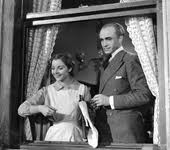
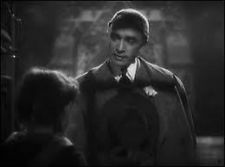
Conrad Veidt (see above still) is mesmerising and intense; – René Ray is full of fear and joy and excitement. Their scenes together are quite wonderful.
It’s an oddball movie, not particularly easy to watch; it looks evil and human weakness pretty directly in the face. But it’s also positively moving—it’s certainly left me thinking and wondering what it’s all about – and I guarantee it will leave YOU wondering but also mesmerised by Conrad Veidt’s wonderful and powerful performance as The Stranger.
I hope everyone who reads this Blog will watch both of these films – One from the Fifties and the other much earlier.
